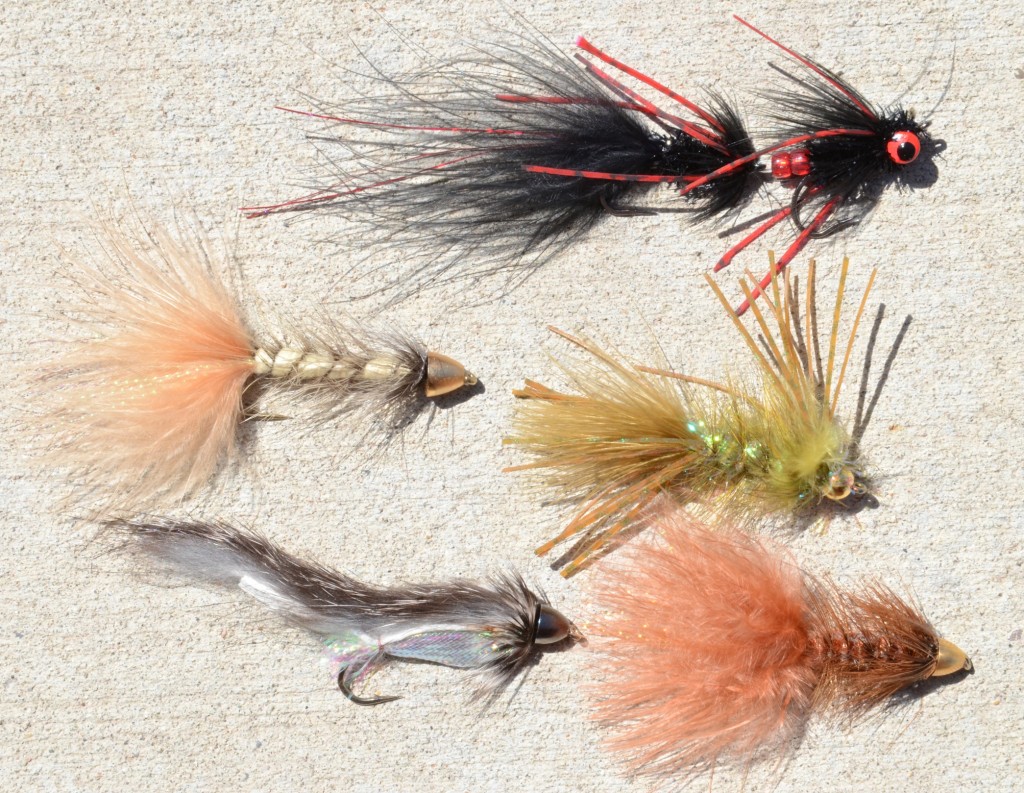Streamer Fishing the Horn

Many anglers are aware that streamer fishing on the Bighorn River can be very exciting. When you have a river with thousands of brown and rainbow trout in the 13 to 20 inch category, there are going to be times when these fish are looking for a meal more substantial than a trico spinner. Here are a few tips that will help you take advantage of this productive style of fly fishing:
Some anglers employ the “bank pounding” strategy. This involves keeping your boat within casting distance of the riverbank, and placing the fly within inches of the shoreline. You’ll want to strip or twitch the fly immediately upon impact, as you try to elicit strikes from trout that are holding tight to the bank. Oftentimes, the angler will make only six or seven strips before recasting. This maximizes the amount of time the fly is near the bank. This technique is usually all about efficiency—he who makes the most casts wins. If the fish are on the grab, aggressive bank pounding can be very effective.
When bank pounding, you can fish a floating line or a moderate sink tip (12’ to 15’). The floating line allows you the luxury of keeping the fly near the bank longer without it sinking too quickly and snagging bottom; plus you can employ a dead drift/twitch method that is often very effective. The sink tip will get you down a few more inches, which can be helpful in deeper water. Also, some people find it easier to shoot line with the increased weight of the sink-tip. If light conditions are optimal (cloudy, or subdued morning or evening light) and the fish are aggressive, keep the rod tip near the water while you strip the fly in. This minimizes line sag from the tip to the water’s surface. That little bit of slack may prevent a positive hookup. Strip line in quickly as you try to cover a lot of water.
When light conditions are favorable, don’t just focus on the bank—shallow to moderate-depth water can be very productive. I like water 2 to 5 feet deep with a little chop to it. The chop indicates some underwater structure, and in this depth of water it doesn’t take too much effort for the fish to come up off the bottom to take the fly.
To fish deeper water effectively, I recommend using a Scientific Anglers Streamer Express or comparable line. The Streamer Express is a 24’ sink tip with running line, and you can buy them in different grain weights. I use the 250 grain line for most of my Bighorn River fishing. This line gets me down quickly in the deep holes. You have to learn to give the line time to sink. I often anchor in the deep water and angle my cast upstream. I then allow the line to sink for several seconds before stripping the fly in. I find an erratic retrieve most effective for deep-water trout. I’ll make a long, slow strip followed by a couple of short, fast strips and then a pause. The trout often choose to strike at the fly during the pause. It is impressive how many fish you can catch out of the deep water with a heavy sink tip. Deep water makes trout feel secure, and they will feel inclined to strike at a fly invading their territory. This deep-water streamer fishing can be effective even on bright, sunny days. Keep your leader short, about 3 ft. maximum.
As for fly patterns, there is almost no end to the specific patterns that can be effective. The Bighorn does not have a lot of baitfish in it, although there are some longnosed dace. Our meat-eating fish tend to look for the occasional dace, smaller trout, carp and sucker minnows, and leeches. Brown-and-yellow patterns have been very effective over the years—the Bighorn Bugger being a top producer. A variety of olive colored streamers also work well. My partner often favors an olive Zonker pattern. Other favorites include the Dirty Red (black and red), Light Spruce Fly, Black & Olive Wooley Bugger, Kiwi Muddler, and the Circus Peanut, a fly popularized by Kelly Gallup. We usually fish these flies is sizes 4 and 6. These sizes will catch the greatest number of fish, plus the trophy fish like them as well. As for the “fish a real big fly for a real big fish” school of thought, I have generally not found this to be the case, although I need to gather more data, which I intend to do … over and over.